The Largest Pumped-Hydro Facility In World Turns On In China ensuring the Beijing Winter Olympics is green. The 3.6 GW Fengning Pumped Storage Power Station, is expected to avoid the use of 480,000 tons of standard coal and reduce carbon dioxide emissions by 1.2 million tons each year.
The Fengning plant is part of the efforts by the Chinese government to ease the pressure of peak regulation, enhance energy flexibility, improve local economic development through circular services promote energy conservation and emission reduction, and improve the safety and reliability of the energy system, according to the Chinese National Energy Administration.
“The green battery in Europe”, Norway has almost half of Europe’s hydro storage capacity.
In Europe, higher and more variable electricity prices together with more unregulated power from solar and wind trigger the interest for large adjustable reservoir power as these and can be used to balance the power market when necessary.
In 2011, Vattenfall Power assessed the costs of building a pumped-storage power plant in Norway, on behalf of the Norwegian Water Resources and Energy Directorate (NVE). They concluded that the power plant will, as a general rule, need more than 20 øre / kWh in the price difference between the power they buy to pump and the power they sell to be profitable.
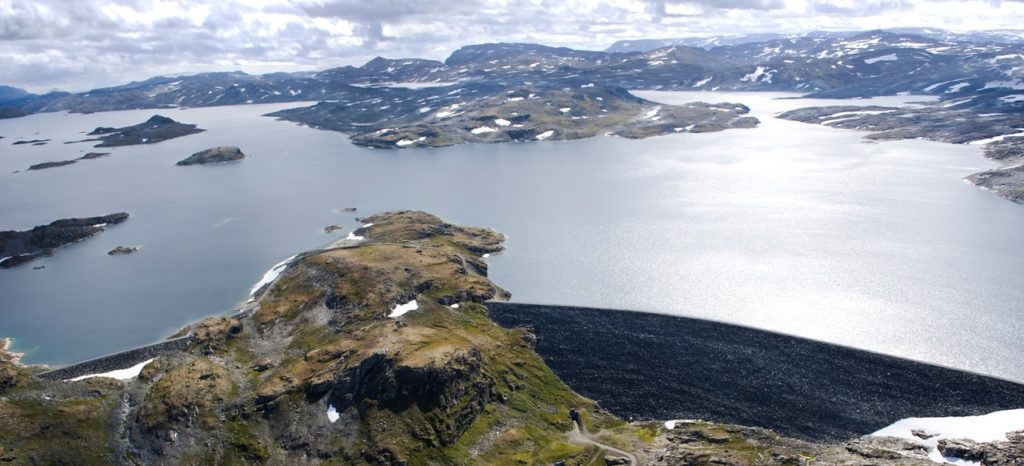
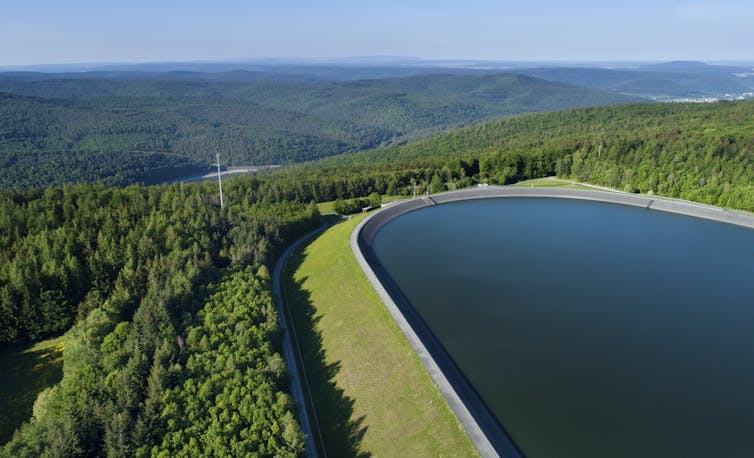
Ollo via Getty Images
Andrew Blakers, Australian National University; Bin Lu, Australian National University, and Matthew Stocks, Australian National University
To cut U.S. greenhouse gas emissions in half within a decade, the Biden administration’s goal, the U.S. is going to need a lot more solar and wind power generation, and lots of cheap energy storage.
Wind and solar power vary over the course of a day, so energy storage is essential to provide a continuous flow of electricity. But today’s batteries are typically quite small and store enough energy for only a few hours of electricity. To rely more on wind and solar power, the U.S. will need more overnight and longer-term storage as well.
While battery innovations get a lot of attention, there’s a simple, proven long-term storage technique that’s been used in the U.S. since the 1920s.
It’s called pumped hydro energy storage. It involves pumping water uphill from one reservoir to another at a higher elevation for storage, then, when power is needed, releasing the water to flow downhill through turbines, generating electricity on its way to the lower reservoir.
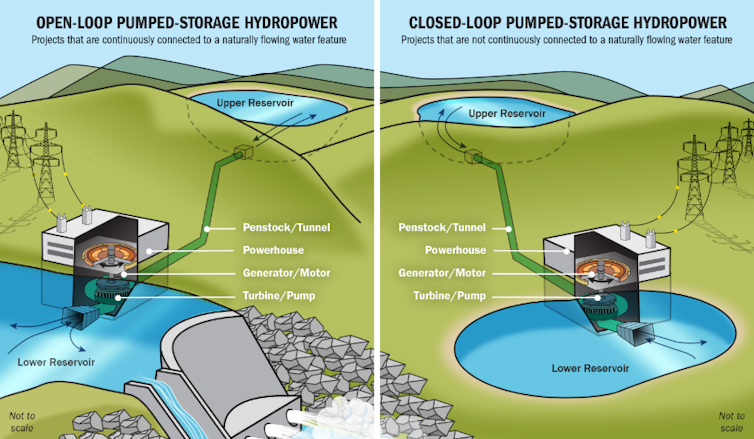
Pumped hydro storage is often overlooked in the U.S. because of concern about hydropower’s impact on rivers. But what many people don’t realize is that most of the best hydro storage sites aren’t on rivers at all.
We created a world atlas of potential sites for closed-looped pumped hydro – systems that don’t include a river – and found 35,000 paired sites in the U.S. with good potential. While many of these sites, which we located by satellite, are in rugged terrain and may be unsuitable for geological, hydrological, economic, environmental, or social reasons, we estimate that only a few hundred sites are needed to support a 100% renewable U.S. electricity system.
Why wind and solar need long-term storage
To function properly, power grids must be able to match the incoming electricity supply to electricity demand in real-time or they risk shortages or overloads.
There are several techniques that grid managers can use to keep that balance with variable sources like wind and solar. These include sharing power across large regions via interstate high-voltage transmission lines, managing demand – and using energy storage.
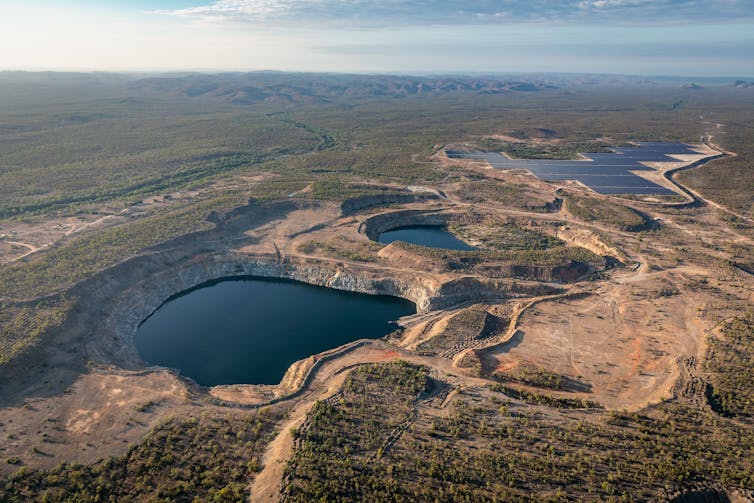
Batteries deployed in homes, power stations, and electric vehicles are preferred for energy storage times up to a few hours. They’re adept at managing the rise of solar power midday when the sun is overhead and releasing it when power demand peaks in the evenings.
Pumped hydro, on the other hand, allows for larger and longer storage than batteries, and that is essential in a wind- and solar-dominated electricity system. It is also cheaper for overnight and longer-term storage.
Off-river pumped hydro energy storage
In 2021, the U.S. had 43 operating pumped hydro plants with a total generating capacity of about 22 gigawatts and an energy storage capacity of 553 gigawatt-hours. They make up 93% of utility-scale storage in the country. Globally, pumped hydro’s share of energy storage is even higher – about 99% of energy storage volume.
Pump hydro projects can be controversial, particularly when they involve dams on rivers that flood the land to create new reservoirs and can affect ecosystems.
Creating closed-loop systems that use pairs of existing lakes or reservoirs instead of rivers would avoid the need for new dams. A project planned in Bell County, Kentucky, for example, uses an old coal strip mine. Little additional land is needed except for transmission lines.
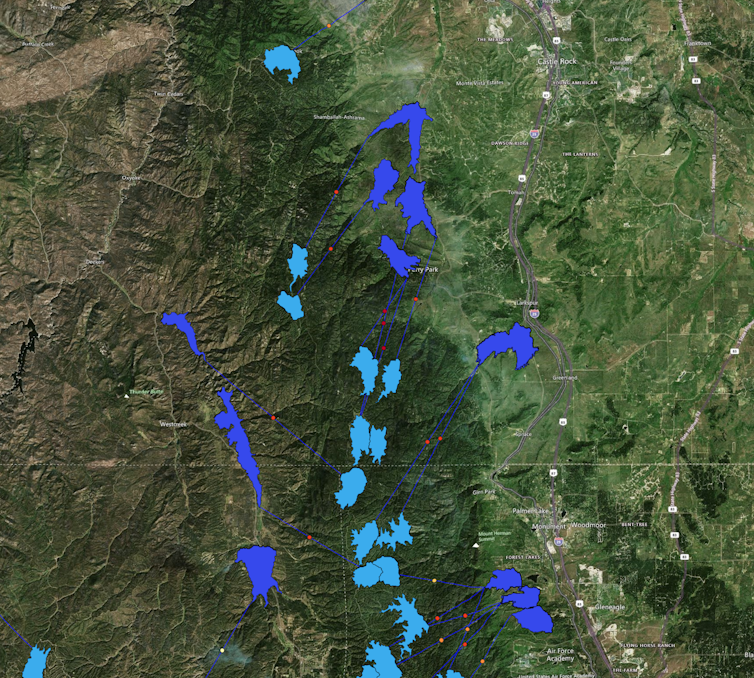
Andrew Blakers, CC BY
An off-river pumped hydro system comprises a pair of reservoirs spaced several miles apart with an altitude difference of 200-800 meters (about 650-2,600 feet) and connected with pipes or tunnels. The reservoirs can be new or use old mining sites or existing lakes or reservoirs.
On sunny or windy days, water is pumped to the upper reservoir. At night, the water flows back down through the turbines to recover the stored energy.
A pair of 250-acre reservoirs with an altitude difference of 600 meters (1,969 feet) and 20-meter depth (65 feet) can store 24 gigawatt-hours of energy, meaning the system could supply 1 gigawatt of power for 24 hours, enough for a city of a million people.
The water can cycle between upper and lower reservoirs for a hundred years or more. Evaporation suppressors – small objects floating on the water to trap humid air – can help reduce water evaporation. In all, the amount of water needed to support a 100% renewable electricity system is about 3 liters per person per day, equivalent to 20 seconds of a morning shower. This is one-tenth of the water evaporated per person per day in the cooling systems of U.S. fossil fuel power stations.
Storage to support 100% renewables
Little pumped storage has been built in the U.S. in recent years because there hasn’t been much need, but that’s changing.
In 2020, about three-quarters of all new power capacity built was either solar photovoltaics or wind power. Their costs have been falling, making them cheaper to build in many areas than fossil fuels.
Australia is installing solar and wind three times faster per capita than the U.S. and is already facing the need for mass storage. It has two systems under construction that are designed to have more energy storage than all the utility batteries in the world put together; another dozen are under serious consideration. None involve new dams on rivers. The annual operating cost is low, and the working fluid is water rather than battery chemicals.
Shifting electricity to renewable energy and then electrifying vehicles and heating can eliminate most human-caused greenhouse gas emissions. The U.S. has vast potential for off-river pumped hydro storage to help this happen, and it will need it as wind and solar power expand.
Andrew Blakers, Professor of Engineering, Australian National University; Bin Lu, Research Fellow, Australian National University, and Matthew Stocks, Research Fellow, ANU College of Engineering and Computer Science, Australian National University
This article is republished from The Conversation under a Creative Commons license. Read the original article.




2 Comments
Pingback: deep sleep
Pingback: study music